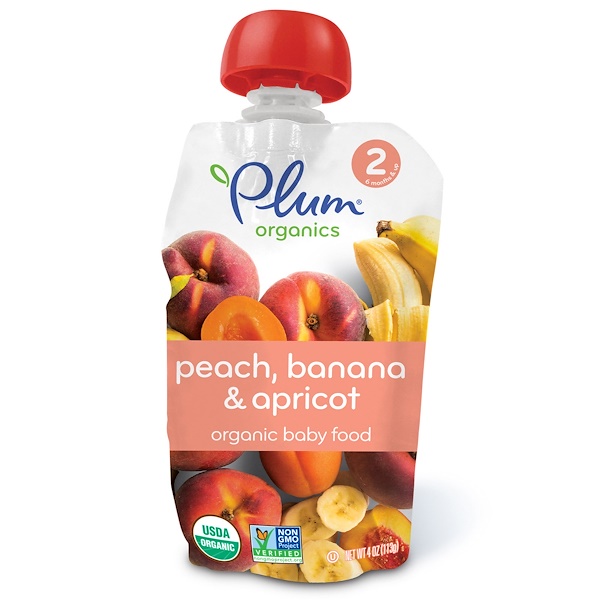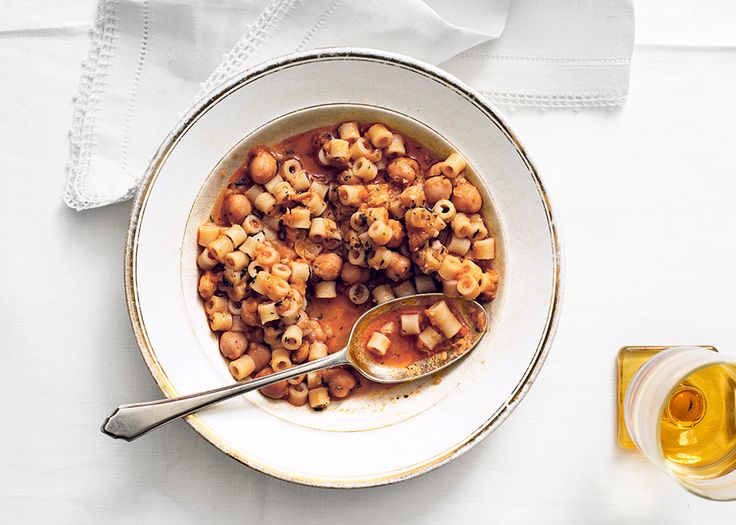Baby led weaning food ideas for 6 month old
Baby Led Weaning Foods for 6 Months
124 shares
- Share
- Tweet
We’re getting into a groove of 6 months baby led weaning with Hannah. We also did baby led weaning with Camryn and really enjoyed that child feeding method.
As an Amazon Associate, I may earn from qualifying purchases. You can read more here on our Disclaimer and Privacy Page.
Since people have shown interest in our experience with introducing solids, I figured I’d share our story of how to start blw (baby led weaning).
Note that while I am a Registered Dietitian, I am not giving specific feeding advice and always advise consulting with your pediatrician for your child’s specific needs.
Some people may be intimidated by the idea of how to do baby led weaning at 6 months because it’s scary to watch your child possibly choke. Also, it’s messy. Very messy.
I do recommend having some equipment to help with the mess. You can see a list of some of my favorites here!
Many people have asked about our baby led weaning 6 month schedule and right now, it varies. I try to offer Hannah solids at least once a day.
Sometimes it works out to be twice if I can sit down with her at breakfast and enjoy this baby waffle recipe or any of these baby breakfast ideas. But, typically it’s dinner time since we’re all sitting down together.
It’s really important to me that she experiences sitting down with all of us – and that’s a core component of baby led weaning.
Baby watches what you are eating, and tries to model it. Baby eats what you eat.
One book which has been an amazing resource for baby led weaning is Born to Eat.
It’s written by two dietitians who did baby led feeding with their children, but it also talks about the benefits outside of just introducing solids, such as their relationship with food later in life and reducing picky eating.
How to Start Baby Led Weaning
We typically do three things before starting baby led weaning!
- Check with your pediatrician
- Ensure signs of readiness are met (see earlier)
- Take an infant CPR class
In my experience, the best way to start BLW is to just start! Have your little one sit at the table with you, even before they are showing signs of readiness.
This can start to introduce them to family meals and watch us eat and chew. Babies are really smart and are observing everything!
Once your babe has shown signs of readiness and you’ve checked with your pediatrician, choose a first food to offer baby.
We’ve done sweet potatoes, avocado or oatmeal as first foods but honestly, there’s no right or wrong answer. If you choose sweet potatoes like we did, here’s a great resource on how to cook sweet potatoes for baby led weaning.
We love this sweet potato spinach baby food recipe, specifically, or even these sweet potato zoodles!
Must Have Equipment for Baby Led Weaning
Everyone may have their own forms of these things that work for them, but this is what we love!
- Born to Eat book
- Sturdy high chair – Since your baby needs to be sitting independently, you want something sturdy for them to be sitting in. It is not safe to feed them on your lap. You want to be looking at them always. I’ve used a Graco with both of mine.

- Long sleeved waterproof bibs with a pocket (you’ll be surprised at how much food goes in that pocket!) or any bib with a pocket (I find silicone bibs easiest to clean)
- Splat Mat – essentially to make clean up easier below the high chair (or a good dog 🙂 )
- Mesh Feeders – These can be great for those who want a modified BLW or just some easier to swallow options before doing full on solids
- Silicone plates and bowls – this works great for feeding oatmeal
- Tiny cup – This is great for starting to introduce water
- 360 Cup – One baby can hold and tip the cup, this is wonderful and will last until toddler years.
Can You Start Baby Led Weaning Before 6 Months?
It’s not really recommended to start baby led weaning before 6 months. I know you can be excited to introduce solids, but you want to make sure your little one is ready.
Signs of readiness include:
- sitting up independently, with little or no support
- hold head up
- show interest in food, usually by reaching or grabbing
- baby has lost tongue thrust reflex and doesn’t push solid food out
I would definitely check with your pediatrician (babies usually have a 6 month old checkup anyway) about signs of readiness.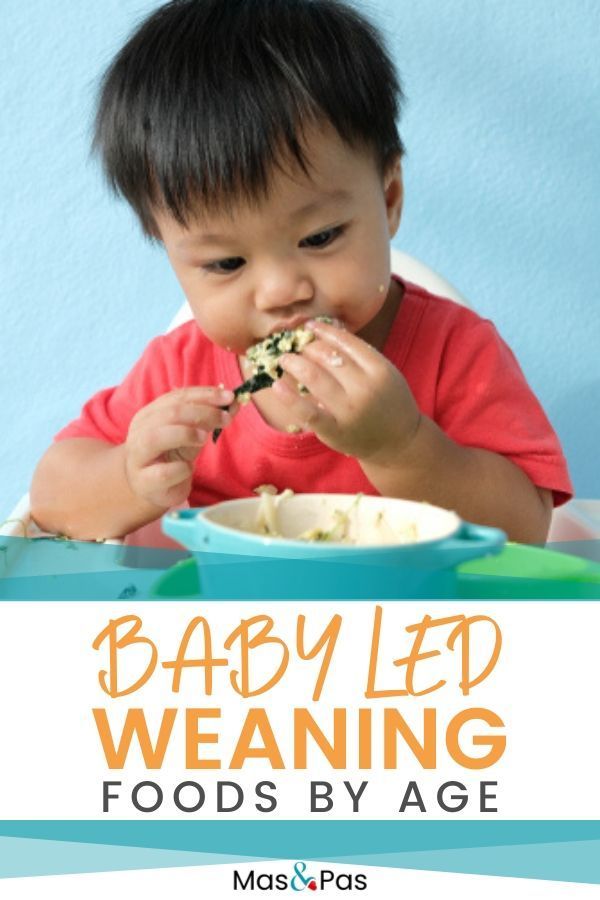
You can also review this research review about developmental readiness in infants and progressing from breastfeeding to the introduction of complementary foods.
How to Introduce Allergens to Baby
I know that introducing allergen foods to baby is scary, for the fear that they will have an allergic reaction and you’ll have to rush to the pediatrician.
That is why you should always consult with your pediatrician first before starting. Especially if you have a family history of allergies or eczema.
There still remains confusion about the early introduction of peanuts and other allergen foods, for fear of causing adverse food reactions.
However, the latest research actually encourages the early introduction of allergen foods (even the 2020-2025 dietary guidelines recommend this).
For instance, for introducing baby to peanut butter, we will probably mix some no sugar added peanut butter powder with breastmilk.
I talk about when to introduce eggs to baby in this post as well.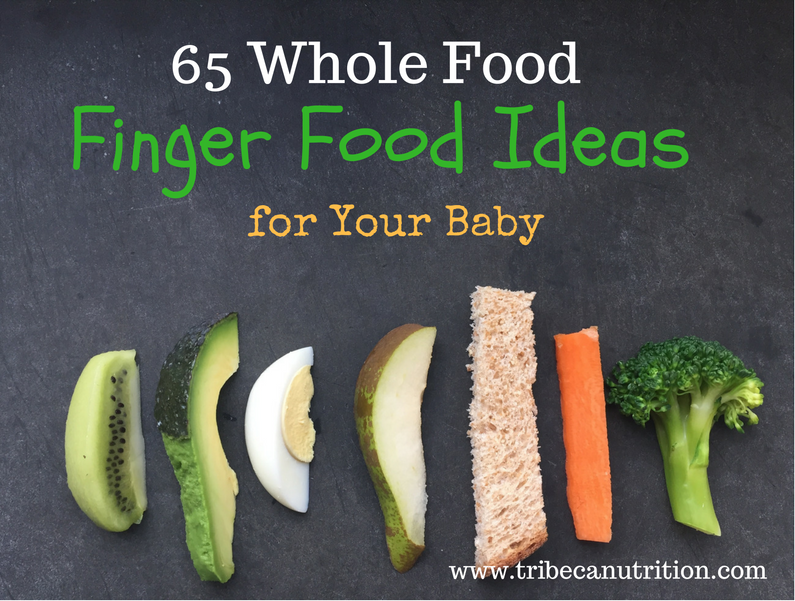
Baby led weaning eggs recipes don’t have to be complicated.
Here’s how to cook eggs for baby led weaning:
- Coat the eggs with chia seeds or flax seeds to make them easier to pick up. We love chia seeds for babies!
- Cut a scrambled egg into strips to serve to baby.
- Offer a hard boiled egg, which is often easier to grip
When making scrambled eggs, I’ll usually mix a little breastmilk in there too. I don’t want it to be too dry for her to pick up.
Can allergies be prevented?
Hard to say! But the latest research does show that introducing allergen foods earlier may decrease the risk of food allergies.
This article does a great job of breaking down the evidence.
If you have specific questions about dairy and egg free baby led weaning, I would consult with your pediatrician, especially knowing that the risk of allergies is decreased offering these allergen foods early.
However, every family is different and family history of allergies is important to consider!
6 Month Old Baby Led Weaning Foods
Here are some of the foods we’ve introduced so far:
- oatmeal (good iron source)
- raspberries
- asparagus
- avocado
- baby led weaning meatballs & various other burger recipes (modified by slicing or cubing)
- sweet potato (several recipes for sweet potatoes for babies and kids!)
- broccoli
- bison (great iron source) – We love these air fryer bison burgers
- baked parsnips or air fryer parsnips
- thinly sliced steak (great iron source)
- beans (great iron source)
- eggs (I like to mix them into several recipes, such as zucchini and sweet potato fritters)
- strawberries
- salmon (salmon patties can be great too)
- pasta
- chicken
When possible, I’ll offer two foods, generally an iron source and Vitamin C source food. The reason for this is because Vitamin C helps enhance iron absorption.
The reason for this is because Vitamin C helps enhance iron absorption.
I also prefer to offer vegetables first since fruits are sweeter. I don’t think there is definitive research on that, or how introducing certain foods before others may develop certain taste preferences.
But, the way I see it, it’s very likely that kids will like fruit because they are sweet.
So, I want to encourage them to like vegetables as well, so I try to introduce those more often right now.
What size food to serve for baby led weaning likely depends on the age and development of your child.
As they progress, you can likely serve less things in finger shapes and more in small shapes, like beans and small diced shapes since they can pick up easier.
Those seem to be easier baby led weaning foods for 8 months. You can also start serving mixed meals then, like casseroles.
How to Cut Food for Baby Led Weaning
In the beginning, as baby is developing hand-eye coordination and grabbing food, it’s probably easiest to cut food into long strips or finger shapes.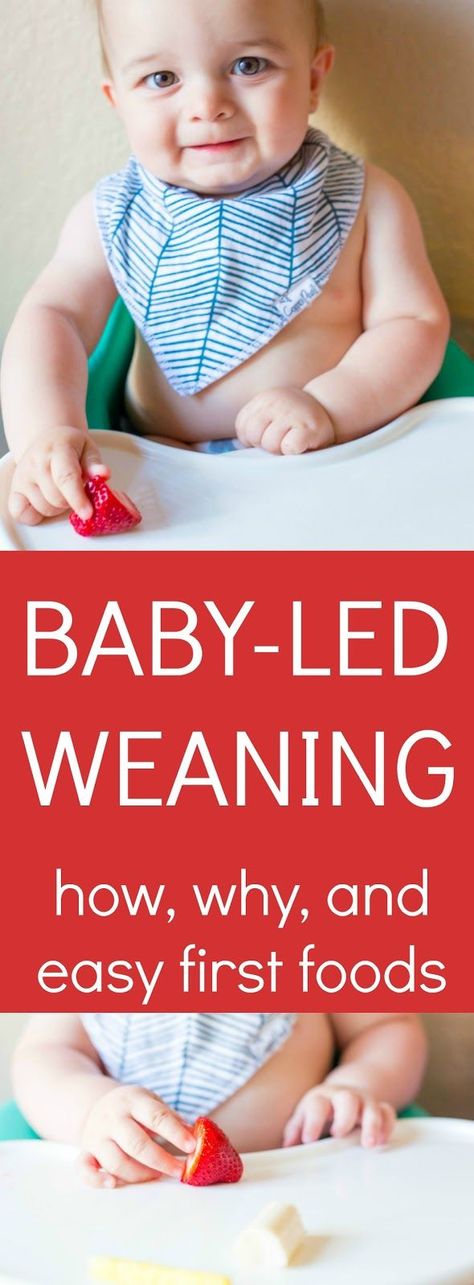 It’s usually easier to pick up this way!
It’s usually easier to pick up this way!
Some food that can’t be cut (ie – oatmeal, mashed sweet potatoes, berries), you can preload onto a baby spoon for them to self feed.
As baby advances, you can start offering smaller sized foods that they can pick up.
Baby Led Weaning Breakfast Ideas
Here are some of my favorite baby led weaning breakfast ideas for 6 months.
- eggs cut into strips with sliced raspberries or avocado slices
- baby french toast sticks (easy to grasp and fun)
- baby pancake (can mash eggs and banana and cook) or make your own
- mashed sweet potato or sweet potato fries and beans
- Mushroom and asparagus quiche
- oatmeal with breast milk and a sliced fruit
- lots of baby led weaning muffin recipes (and some for when they get a little older)
- yogurt
- tropical chia pudding
- apple pumpkin baked oatmeal
What Foods Should You Avoid Giving to Babies?
Here’s some foods you’ll want to avoid in baby led weaning.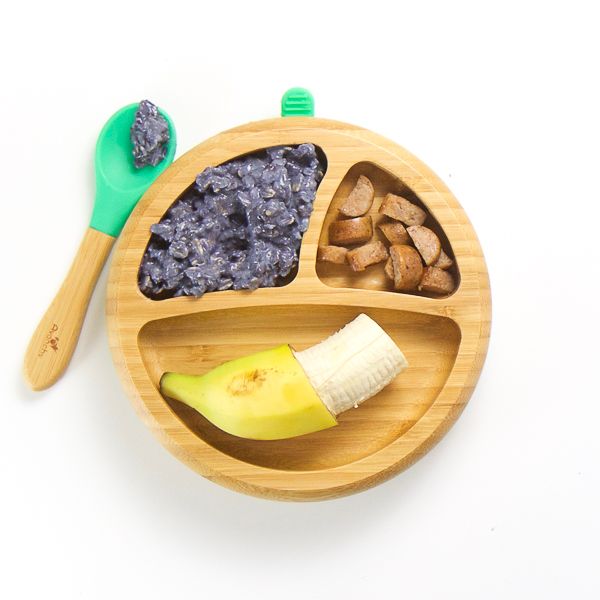
- You want to avoid anything hard or anything the same shape as their windpipe, which could lead to blockage or choking. Again, taking an infant cpr class is vital so you do understand the difference between choking and gagging and know what to do if your baby is choking.
- Also, avoid anything overly crunchy or sticky.
- Honey is also not recommended for children under age 1 due to the risk of botulism.
- Avoid added sugar and high amounts of salt, as babies kidneys’ are not equipped to handle high amounts of salt yet.
- Cows milk until age 1 – Baby just needs breastmilk or formula
For the most part, though, baby CAN eat what you eat.
Tell me,
Did you do baby led weaning? What was your babies’ favorite foods?
Sarah Schlichter is a Registered Dietitian with a Master’s in Public Health Nutrition. She specializes in sports nutrition and intuitive eating, and recipe development. She also co-hosts the podcast, Nail Your Nutrition.
Ultimate Guide to Baby Led Weaning (and Best First Foods)
Learn the basics of how to do the feeding approach known as “baby led weaning” and the best first foods for baby to make starting solids easy and fun. Plus: Learn why it’s perfectly okay to use a combined approach of blw and purees.
Baby Led Weaning
The feeding approach known as “baby led weaning” or “BLW” for short, is a style of feeding infants that allows them to feed themselves right from the start. The food is offered in thick finger-size pieces and is soft and easily squishable between your fingers. This way, the food is both easy to hold but has a low risk of choking.
TIP: This method became popular about a decade ago after the publication of the Baby Led Weaning: The Essential Guide to Introducing Solid Food by UK author Gill Rapley.
BLW Baby
One of the many reasons that people are starting to opt for this style of feeding more and more is simply that it’s easy. In many cases, you can modify foods you’re already making to share with your baby and there’s not always a lot of separate cooking involved. It also allows a baby to have control over what goes into their mouths, which sets a good precedent for letting them eat intuitively from the start.
In many cases, you can modify foods you’re already making to share with your baby and there’s not always a lot of separate cooking involved. It also allows a baby to have control over what goes into their mouths, which sets a good precedent for letting them eat intuitively from the start.
What age should I start baby led weaning?
According to the American Academy of Pediatrics, a baby is ready to start solids with baby led weaning when:
- They’ve doubled their birth weight (at least).
- They can hold their head up well and are starting to sit up unsupported.
- They show signs of being interested in food (watching you eat, reaching for food when you’re eating, etc).
- When you feed them, they are able to move the food around in their mouths—rather than spit it right out.
TIP: Look for a highchair that allows a baby to sit up relatively straight so they can have good posture and better control over their arms and hands.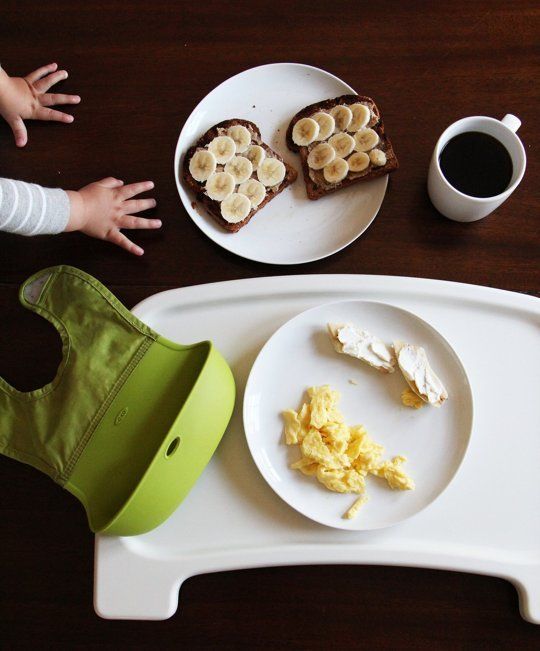
How to Start Baby Led Weaning
The first time you offer solids is such a fun milestone, so you’ll be ready once you follow these simple steps.
- Make sure baby has hit the milestones listed above to let you know that he’s ready to start.
- Get the highchair ready and adjust the straps and foot rest as needed.
- Plan to introduce water when you start solids. I recommend a trainer cup.
- Choose one food to start with and plan to offer only one food at a time.
- Stop when baby starts to fuss, turns his head away, or shows any other signs of not wanting to continue. It’s usually fairly obvious when they are done!
TIP: If you start offering solids and baby just doesn’t seem interested at all, it’s okay. Take a break for a few days or a few weeks and start again. Each kiddo has their own unique timeline.
Best Tips for Starting BLW
Here are a few more tips to consider and review before you get started.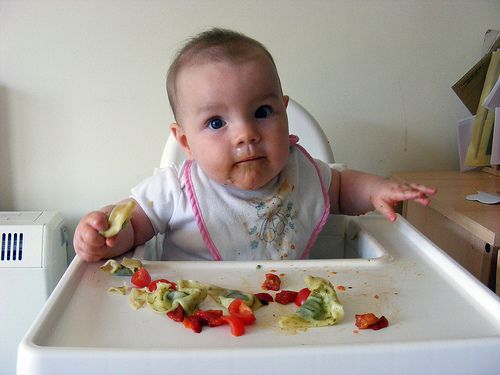
- Understand the gag reflex. Gagging is different than choking though and is most often a sign that baby is learning to move food around in their mouths—and to get it out of their mouths, which is a skill you want them to have!
- Brush up on the basics of how to know when baby is ready to start solids. (Go back to the top of this post for the signs to look for.)
- Set them up for success with a highchair that allows them to sit up straight and has foot support.
- Sit with them as you offer food.
- Check your own expectations of what will happen and simply allow your baby to take the lead.
- Start with one new food a day or every few days.
- Vary the textures of foods you offer to start exposing baby to many right from the start.
- Offer water in a sippy cup or small open cup.
TIP: Remember that breastmilk or formula will continue to satisfy baby’s hunger for the first few months of eating solids. Do not expect solids to replace milk feedings at this age.
First Foods for Baby
Starting solids with baby led weaning or purees are both perfectly acceptable ways to introduce a baby to solid foods—but the topic can get so heated! There’s a lot of pressure to do it the “right” way and I’m here to say that there isn’t one. You 100% can do one or the other, or combine the two to make it work for your family. It’s all good!
Remember, the goal with first foods for baby is that they’re introduced to flavors, nutrients, and foods they can easily eat or suck on. It should be an enjoyable milestone for all involved.
TIP: It’s a good idea to get into the habit of offering an iron-rich food since iron stores in babies start to run out around 6 months and they’ll need to start ingesting it in their food.
Best First Foods for Baby Led Weaning
Here are some of our favorite first foods to offer baby led weaning style. You want foods to be finger sized so they are large enough that baby can’t force the whole piece into their mouth, and a shape that’s easy for a 6 month old to hold with their chubby little hands. These are some of our favorites.
These are some of our favorites.
- Roasted sweet potato wedges
- Roasted apple wedges, skin on to help them hold together
- Roasted or steamed broccoli florets (big enough for baby to hold)
- Melon slices
- Thick mango slice
- Banana with some of the peel still on
- Toast sticks with mashed avocado
- Avocado spears (make sure the avocado is ripe and soft)
- Lamb or beef, on the bone or a large piece for baby to suck on
- Dark meat chicken, on the bone or a large piece for baby to suck on.
TIP: The foods should generally be soft enough to squish between your fingers with the exception of the large pieces of meat. If baby gnaws a piece down into a smaller piece, replace it with a larger one to avoid her putting a chunk of food into her mouth.
Baby Led Weaning Banana
To serve a banana to a baby, wash it well, then slice it in half. Cut off an inch or two of the peel, but leave the rest of the peel on so it’s not slippery for baby to hold. They’ll suck on the top part like a little popsicle! You can also help them hold the banana if needed.
They’ll suck on the top part like a little popsicle! You can also help them hold the banana if needed.
Foods to Avoid Serving While Doing BLW
You want any foods you offer to a baby while doing baby led weaning to be soft enough to squish between your fingers and safe for them to eat and digest. Plan to avoid:
- Anything hard, sticky, or crunchy (like raw apple or carrot, whole nuts, crackers, or a big spoonful or nut butter)
- Added salt
- Cow’s milk (which is difficult for kids under 1 to digest; plain yogurt is fine though)
- Added sugar (they simply don’t need it)
- Honey (to avoid a risk of botulism)
- Super slippery foods that would be hard for baby to hold (which can be frustrating)
TIP: Always sit with your baby and watch them try to eat. They are your best guide for making adjustments to the foods you serve.
Baby Led Weaning and Choking
There are many parents who dislike this method of feeding because it often sounds like a baby is choking. And while there are surely some incidences of choking, what’s more likely is that a baby will occasionally gag on a piece of food that gets into their mouth that they weren’t expecting.
And while there are surely some incidences of choking, what’s more likely is that a baby will occasionally gag on a piece of food that gets into their mouth that they weren’t expecting.
But remember: Gagging is a sign that baby is doing what she needs to in order to move the food around in their mouth as they learn to eat. It usually sounds more dangerous than it actually is.
TIP: If the sound of gagging really freaks you out, you’re not alone. Consider offering more preloaded spoons with purees to start your journey more slowly.
How to Cut Foods for BLW
You generally want the food to be big enough that it would be difficult for baby to put the entire thing into their mouths. Here are some specifics:
- Foods that are roughly the size of a finger, so about a 4-inch stick.
- Foods that are easy for the baby to pick up—they can’t pick up small pieces until closer to 9 months when they develop the ability to use their fingers in what’s known as a “pincer grasp”.

- Foods that aren’t too slippery—so you can wash and leave some of the peel on fresh foods like bananas, avocado, kiwi, and mango.
TIP: You can also go even bigger if you’re worried about size. Think half of a slice of bread or a big chunk of watermelon.
Will my baby actually eat much food with BLW?
Probably not at first. There will likely be more tasting of the food than eating of it and that is totally fine. They will still rely on breast milk or formula at this age for their main nutrition, so don’t expect them to suddenly start eating full meals. (They’ll get there in a few months, but it takes time!)
Do babies need teeth for baby led weaning?
No! Gums are super strong and front teeth aren’t used for chewing—that happens when the back molars come in. Teeth really have nothing to do with whether or not a baby can eat solids.
TIP: Learn more about what to expect from teething here.
Can you mix baby led weaning and purees?
Absolutely! I think it’s a great idea to mix the two methods simply because it gives you many more options for foods and allows the baby to experience more textures.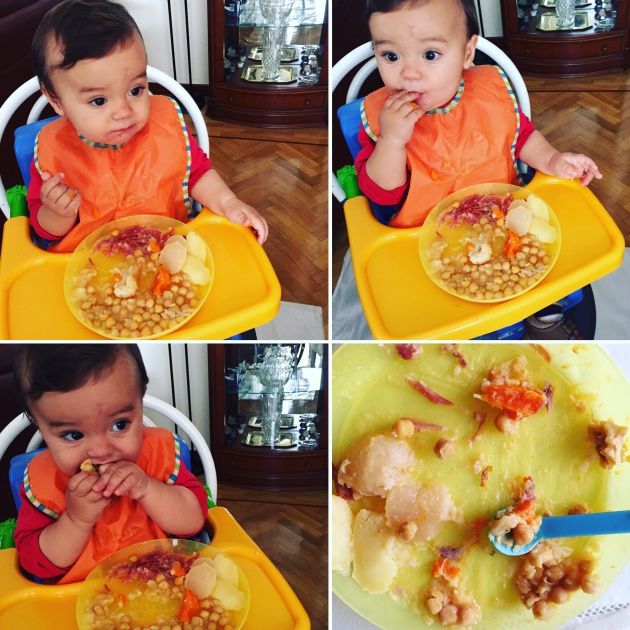 I recommend allowing babies to feed themselves preloaded spoons—so you put the puree on a spoon, then hand it to them to actually put the spoon into their mouth—so they still have control over what goes into their mouths.
I recommend allowing babies to feed themselves preloaded spoons—so you put the puree on a spoon, then hand it to them to actually put the spoon into their mouth—so they still have control over what goes into their mouths.
TIP: Feeding some purees is also helpful if you’ll be sending food with a baby to daycare since the care provider may not have experience with blw.
Best First Foods for Baby: Purees
Here are some of our favorite purees to start offering baby when they’re ready to start solids. Remember: There’s no evidence that says that you need to start with vegetables versus fruits, so go with something that tastes good to you. Start with single foods pureed smooth and offer just a little at a time on a spoon.
- Mashed roasted sweet potato puree
- Mashed avocado puree
- Mashed banana puree
- Butternut squash puree
- Applesauce, unsweetened
- Mashed pea puree
- Oatmeal baby cereal (with added iron)
TIP: One of my favorite baby food companies is Amara Organic Baby Food, a company using a nutrient protection technology that makes organic purees just as good as homemade.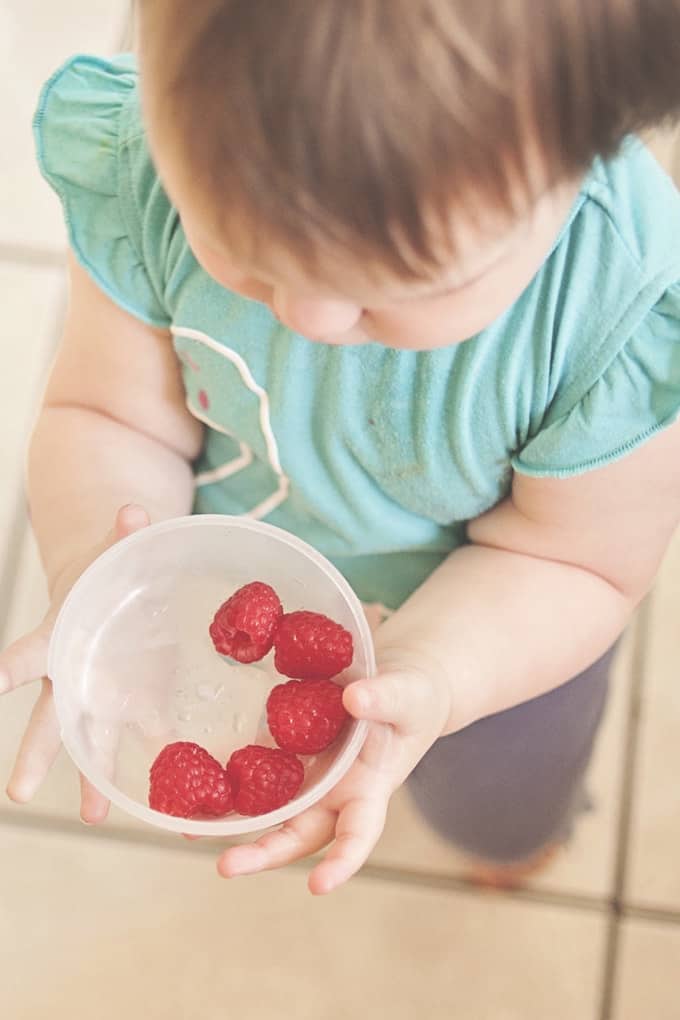 I love how easy they are to use when I need a shortcut and that they have fun baby-led weaning recipes on the side of every box! (paid affiliate link)
I love how easy they are to use when I need a shortcut and that they have fun baby-led weaning recipes on the side of every box! (paid affiliate link)
How do I know when baby has had enough?
If your baby is eating and then starts to turn her head away or just refuses to open her mouth, she’s done! Babies may also start to fuss if they’ve had enough. Learning this new skill takes time and babies can become tired fairly quickly into the process, so don’t expect them to always eat very much or to last very long at the table. This stage is about exploration!
Baby with preloaded spoon of yogurtHow to Let Baby Self Feed Purees
I love offering purees on a preloaded spoon. To do this, the parent, puts some of the food on the spoon and hands it to baby. Then baby can bring the food to their mouth all by themselves. This gives you some of the same advantages of baby led weaning, but can be more comfortable for many parents.
Remember, you can mix what you offer, going back and forth between purees and blw finger foods, so you can offer the same food two different ways to let baby explore. The main goal is to avoid forcing baby to take more bites than they want to, which can sometimes happen with purees.
The main goal is to avoid forcing baby to take more bites than they want to, which can sometimes happen with purees.
When to Introduce Potentially Allergenic Foods
In recent years, guidelines have been updated on when to introduce potential allergens including peanuts, eggs, and shellfish, so unless you have a family history of a food allergy, you can go ahead and introduce them soon after baby starts eating solids. In fact, research is showing that introducing these foods early can actually protect baby from developing an allergy. Talk to your pediatrician if you have concerns.
TIP: Thin unsweetened peanut butter with water to form a very thin Peanut Butter Puree until it’s about the consistency of regular yogurt and offer a very small amount on a spoon or spread on a toast stick.
What does a baby led weaning meal look like for months 7 and 8?
Until a baby is closer to 9 months and is able to pick up smaller pieces of foods, but after they have gotten the hang of one food at a time, I try to offer 1-2 foods they can feed themselves and one puree. This offers them a chance to ingest more via the puree but still feed themselves a range of textures. You can do more or less food following the lead of the child.
This offers them a chance to ingest more via the puree but still feed themselves a range of textures. You can do more or less food following the lead of the child.
TIP: My Baby Food Chart has loads of with ideas for blw foods and purees by month.
Recipes for Every Stage of Starting Solids
If you’re ready to start solids with baby, or you’re just curious what it looks like to do a mix of baby led weaning and purees, check out my Yummy Baby Food cookbook. It goes stage by stage with specific foods to start in each, with simple recipes and easy feeding tips.
Listen to a recent podcast episode to hear about some of the basics of BLW with our guest Megan McNamee, MPH, RDN, CLT, and a Registered Dietitian Nutritionist specializing in pediatric nutrition who runs Feeding Littles.
I’d love to hear any questions you have with BLW or if your baby had a first food that I didn’t list here. Please comment below to share your experience!
Prep Time 5 minutes
Total Time 5 minutes
Author Amy Palanjian
Cuisine American
Course Dinner
Calories 28kcal
Servings 1
Banana
- ▢ 1 small ripe banana with peel on
Roasted Sweet Potato
- ▢ 1 small sweet potato + 1 teaspoon olive oil
Roasted Apple
- ▢ 1 small apple + 1 teaspoon butter or neutral oil
Roasted Broccoli
- ▢ 1 cup broccoli florets + 1 teaspoon olive oil
Sauteed Green Beans
- ▢ 4 green beans 1 teaspoon olive oil
Melon
- ▢ 1 small piece watermelon or cantaloupe
Avocado Toast
- ▢ 1 slice whole grain bread
- ▢ 1 tbsp ripe avocado
Avocado Spear
- ▢ ⅛ ripe avocado
Lamb or Beef
- ▢ 1 lamb chop, roast, or steak
Pan-Seared Chicken Thighs
- ▢ 1 chicken thigh
- ▢ 1 tsp olive oil
- ▢ 1 garlic clove, optional
Banana with some of the peel still on
Cut a banana in half.
 Use a knife to gently cut around the peel about 2 inches down, leaving some of the peel on so that the banana is easy for baby to hold and less slippery.
Use a knife to gently cut around the peel about 2 inches down, leaving some of the peel on so that the banana is easy for baby to hold and less slippery.
Roasted Sweet Potato Wedges
Preheat oven to 400 degrees and line a rimmed baking sheet with foil. Wash and dry the sweet potato. (You don't need to peel it.) Cut in half, then cut lengthwise into strips. Cut each strip in half again until each is about 1/2-inch thick. Slice in half horizontally if the sweet potato is very long. (Each strip should be about the size of your finger.) Place into a bowl and toss with the olive oil. Spread onto prepared baking sheet and roast for 22-25 minutes or until soft. Let cool slightly and serve.
Roasted Apple Wedges
Roasted Broccoli Florets
Preheat the oven to 400 degrees F. Place the broccoli onto a rimmed baking sheet and toss with the olive oil, coating and mixing well until all of the florets are a little shiny and coated with oil.
 Roast for 15-18 minutes or until tender. Let cool slightly and serve.
Roast for 15-18 minutes or until tender. Let cool slightly and serve.
Sauteed Green Beans
Warm the oil in a large skillet over medium heat. Add the green beans and stir. Cover and cook for about 8 minutes. Remove cover and taste one to see if it’s soft enough. Cook for an additional minute or two as needed.
Melon slices
Avocado Toast
Avocado Spears
(Make sure the avocado is ripe and soft): Cut a thick strip of avocado and offer to baby. You can leave the peel on if that makes it easier for baby to hold (just wash it first).
Lamb or Beef
Prepare a roast, steak, or chop without salt and with butter or olive oil until cooked medium well. Offer a thick slice at least the size of your finger or a drumstick.
Pan-Seared Chicken Thighs
Warm 1 tablespoon olive oil or butter in a large skillet over medium heat. Add the chicken thigh and top with a few slices of fresh garlic, if desired.
 Cover and cook for 4-5 minutes. Remove cover. Flip over and cook for an additional 4-5 minutes uncovered or until a meat thermometer registers 165 degrees F.
Cover and cook for 4-5 minutes. Remove cover. Flip over and cook for an additional 4-5 minutes uncovered or until a meat thermometer registers 165 degrees F.
- Add spices like garlic powder, cinnamon, cumin, oregano, or any other non-spicy flavor you like to make these more interesting.
- Offer just one piece at a time when starting out.
- If baby gnaws a piece down into a smaller piece, replace it with a larger one to avoid her putting a chunk of food into her mouth.
- Store any leftovers in an airtight container in the fridge for 3-5 days. Reheat briefly if needed.
- Remember that it's normal for babies to take time to actually ingest the food. Part of the process is exploring all of the senses related to the experience of eating.
Calories: 28kcal, Carbohydrates: 2g, Protein: 1g, Fat: 2g, Saturated Fat: 1g, Polyunsaturated Fat: 1g, Monounsaturated Fat: 2g, Sodium: 6mg, Potassium: 75mg, Fiber: 1g, Sugar: 1g, Vitamin A: 23IU, Vitamin C: 2mg, Calcium: 2mg, Iron: 1mg
Tried this recipe?Rate in the comments and tag @yummytoddlerfood on IG!
Complementary foods at 6 months | Useful tips from the Tyoma brand
Pediatricians around the world, including experts from the World Health Organization, unanimously believe that the introduction of complementary foods should be carried out in the interval of 4-6 months.
Early introduction of complementary foods (up to 4 months). fraught with the development of allergic reactions and indigestion.
Late introduction of complementary foods, from 7 months, can lead to a deficiency in the child's diet of essential nutrients, an iron deficiency state at the age of 9-10 months, eating disorders, delayed development of chewing skills and swallowing of thick foods.
With the normal development of the child and the absence of signs of iron deficiency anemia, complementary foods can be introduced from 6 months. This applies to both formula-fed and breast-fed babies.
Signs that a baby is ready to breastfeed include
- Absence of the spoon-ejection reflex
- the presence of a bright food interest in the baby to the food of adults
It is important to remember that a child’s lack of teeth and the ability to sit are not signs of a baby’s unpreparedness for eating thick foods.
It is very important to understand the main goals of the introduction of complementary foods:
- Provide the child with the necessary nutrients.
- Develop a child's food interest, introduce him to new tastes.
In no case should the introduction of complementary foods be of a violent nature, since this will not only not contribute to the development of a child’s food interest, but can also lead to a complete refusal of the baby from complementary foods, which will destroy the main goals of complementary foods.
How to start introducing complementary foods at 6 months of age?
The first product of complementary foods, regardless of the start date of the introduction of complementary foods and the type of feeding of the baby (breast or artificial), should be energy-intensive foods: porridge, or vegetable puree.
If the child has a liquefied or unstable stool, and there is also a lack of body weight, then it is better to choose porridge as the first complementary food. After 3-4 days from the beginning of the introduction of porridge, butter can be gradually added to it (up to 5 g per serving of porridge in 150 g)
After 3-4 days from the beginning of the introduction of porridge, butter can be gradually added to it (up to 5 g per serving of porridge in 150 g)
If the child has a tendency to constipation, then it is better to choose vegetable marrow puree as the first complementary food, which can have a mild laxative effect on the child's stool. Starting from the 3-4th day of the introduction of vegetable puree, vegetable oil can be gradually added to it (up to 5 g per serving of vegetables in 150 g)
What products are better to give preference to at 6 months?
Kashi
The first cereals can be buckwheat, rice or corn. They must be dairy-free and can be diluted with water or breast milk, or the mixture that the baby eats. Later, you can introduce oatmeal and millet porridge
Vegetables
The first vegetable puree can be zucchini, broccoli, or cauliflower. Later, kohlrabi, potatoes, green beans, white cabbage, green peas, celery can be introduced into the diet.
Fruit
The third type of complementary foods can be fruit puree from apples, pears or bananas. Later, you can introduce mashed apricot, peach. For starters, fruit puree may not be given to the child separately, but it is better to mix it with cereal or vegetables so that the child does not begin to prefer the sweet taste of fruits. When the amount of fruit puree reaches 50 g or more, it can also be given separately, for example, after the child has eaten porridge or cottage cheese.
Juices
Juices should not be the first feeding, in addition, they can not be introduced into the baby's first year of life at all, given their sweet taste and low nutritional value.
Basic rules for the introduction of complementary foods from 6 months
- A faster introduction of the main complementary foods into the child's diet compared to their introduction from 4 or 5 months, namely, bringing the amount of one product to the age volume can be carried out in 5-7 days.
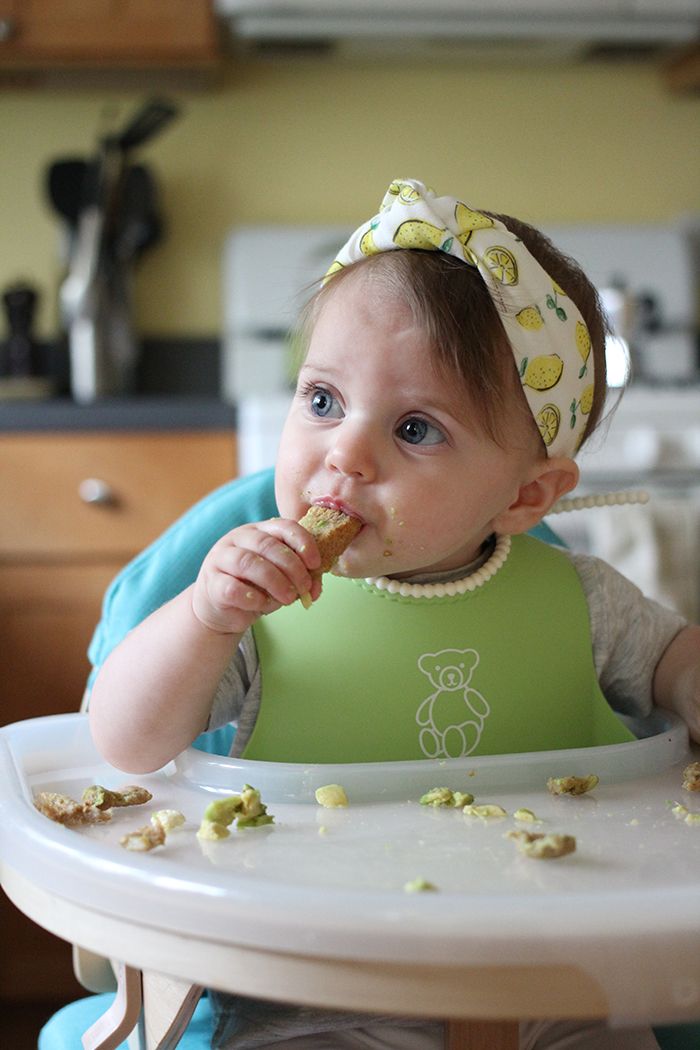
- Introduction of complementary foods before breastfeeding or formula.
- Feeding the child is carried out not at the request of the child, but at the request of the mother. What it means: you should try to introduce complementary foods regularly and at the same time, allocating for this conditionally time for the future breakfast, lunch and dinner (afternoon snack).
How to start the introduction of a new product?
The introduction of a new product should be gradual.
- On day 2 - 3 tsp. (15 g)
- On day 3 - 6 tsp. (30 g)
- Day 4 - 50 g
- Day 5 - 100 g
- On the 7th day - 150 g
Important!
If on the 5-7th day of the introduction of a new product, the baby still cannot eat 100-150 ml of porridge or puree at once, then this amount can be divided into 2 doses, for example, give 100 ml of porridge in the morning and 50 ml in the evening.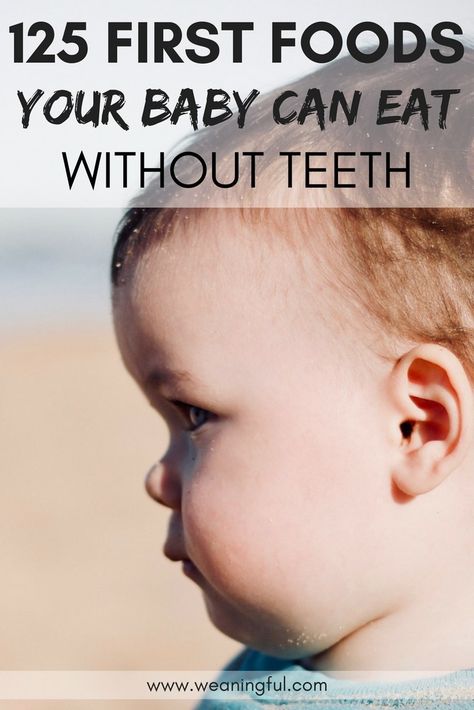
From the second week of the introduction of a new product, one milk feeding can be completely replaced with complementary foods.
Approximate weekly feeding schedule
If we start complementary foods with vegetable puree, then the schedule might look something like this:
- Morning feeding (6:00 am): breast milk or infant formula 180-200 ml
- Breakfast (10:00): breast milk or infant formula 180-200 ml
- Lunch (14:00): broccoli 10-150 grams. Supplementing with breast milk or infant formula
- Afternoon snack (18:00): breast milk or infant formula 180-200 ml
- Night feeding (22:00): breast milk or infant formula 180-200 ml
2 weeks
From the second week, you need to start introducing dairy-free porridge.
- Morning feeding (6:00 am): breast milk or infant formula 180-200 ml
- Breakfast (10:00): porridge 10-150 g, supplemented with breast milk or infant formula
- Lunch (14:00): Broccoli 150 grams.
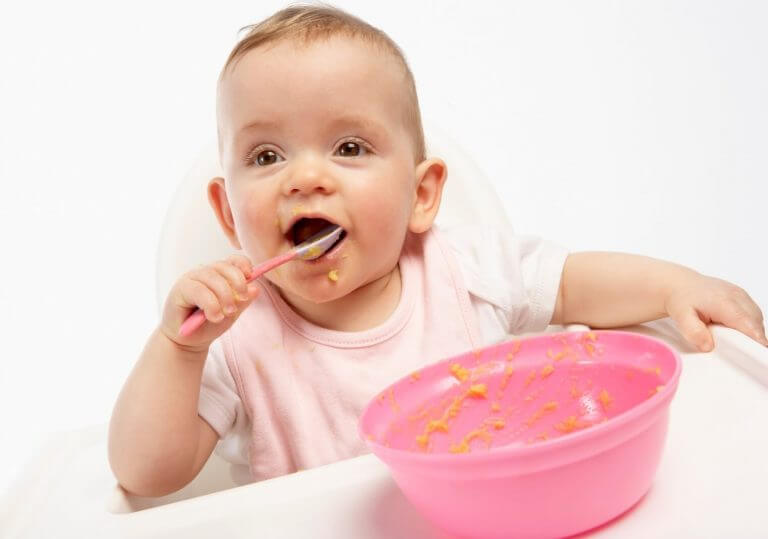 Vegetable oil 5 g Supplementary feeding with breast milk or infant formula up to 50 ml
Vegetable oil 5 g Supplementary feeding with breast milk or infant formula up to 50 ml - Afternoon snack (18:00): breast milk or infant formula 180-200 ml
- Night feeding (22:00): breast milk or infant formula
3 week
From the third week, you need to start introducing meat puree, which is most convenient to add to vegetable puree
- Morning feeding (6:00 am): breast milk or infant formula 180-200 ml
- Breakfast (10:00): porridge 150 g, supplemented with breast milk or infant formula
- Lunch (14:00): Broccoli 150 grams. Vegetable oil 5 g Meat puree 5-20 g Supplementation with breast milk or infant formula up to 50 ml
- Afternoon snack (18:00): breast milk or infant formula 180-200 ml
- Night feeding (22:00): breast milk or infant formula
4 week
From the fourth week, you can introduce fruit puree, which is most convenient to add to porridge
- Morning feeding (6:00 am): breast milk or infant formula 180-200 ml
- Breakfast (10:00): porridge 150 g, fruit puree up to 50 g
- Lunch (14:00): Broccoli 150 grams.
 Vegetable oil 5 g Meat puree 20 g Supplementation with breast milk or infant formula
Vegetable oil 5 g Meat puree 20 g Supplementation with breast milk or infant formula - Afternoon snack (18:00): breast milk or infant formula 180-200 ml
- Night feeding (22:00): breast milk or infant formula
From the fifth week, you can begin to introduce the second type of porridge, which is most convenient to start adding to the first type, gradually displacing its amount.
From the sixth week, you can enter another type of vegetable puree. And so on.
By 7 months two milk feedings can be completely replaced with complementary foods.
Diet for a 4-6 month old baby
Your baby is already 4 months old. He has noticeably grown up, become more active, is interested in objects that fall into his field of vision, carefully examines and reaches for them. The emotional reactions of the child have become much richer: he joyfully smiles at all the people whom he often sees more and more often, makes various sounds.
You are still breastfeeding or have had to switch to formula or formula feeding. The child is actively growing, and only with breast milk or infant formula, he can no longer always get all the necessary nutrients. And that means it's time to think about complementary foods.
The optimal time to start its introduction is between 4 and 6 months, regardless of whether the baby is receiving breast milk or formula. This is the time when children respond best to new foods. Up to 4 months, the child is not yet ready to perceive and digest any other food. And with the late introduction of complementary foods - after 6 months, children already have significant deficiencies of individual nutrients and, first of all, micronutrients (minerals, vitamins, long-chain polyunsaturated fatty acids, etc.). In addition, toddlers at this age often refuse new foods, they have delayed development of chewing skills for thick foods, and inadequate eating habits are formed. It is important to know that, no matter how strange it may seem at first glance, with a delayed appointment of complementary foods, allergic reactions more often occur on them.
When is it advisable to introduce complementary foods as early as 4 months, and when can you wait until 5.5 or even 6 months? To resolve this issue, be sure to consult a pediatrician.
As a rule, at an earlier age (4 - 4.5 months), complementary foods are introduced to children at risk of developing iron deficiency anemia, as well as children with insufficient weight gain and with functional digestive disorders.
The optimal time to start complementary foods for a healthy baby is between 5 and 5.5 months of age.
The World Health Organization recommends that breastfed babies should be introduced to complementary foods from 6 months of age. From the point of view of domestic pediatricians, which is based on extensive practical experience and scientific research, this is possible only in cases where the child was born on time, without malnutrition (since in these cases the mineral reserves are very small), he is healthy, grows well and develops. In addition, the mother should also be healthy, eat well and use either specialized enriched foods for pregnant and lactating women, or vitamin and mineral complexes in courses.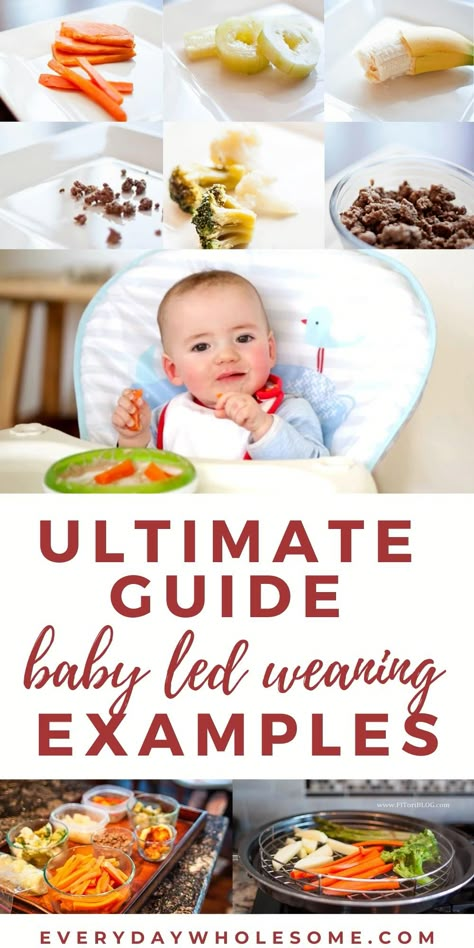 Such restrictions are associated with the depletion of iron stores even in a completely healthy child by 5-5.5 months of age and a significant increase in the risk of anemia in the absence of complementary foods rich or fortified with iron. There are other deficits as well.
Such restrictions are associated with the depletion of iron stores even in a completely healthy child by 5-5.5 months of age and a significant increase in the risk of anemia in the absence of complementary foods rich or fortified with iron. There are other deficits as well.
The first complementary food can be vegetable puree or porridge, fruit puree is better to give the baby later - after tasty sweet fruits, children usually eat vegetable puree and cereals worse, often refuse them altogether.
Where is the best place to start? In cases where the child has a tendency to constipation or he puts on weight too quickly, preference should be given to vegetables. With a high probability of developing anemia, unstable stools and small weight gains - from baby cereals enriched with micronutrients. And if you started introducing complementary foods with cereals, then the second product will be vegetables and vice versa.
If the first complementary food is introduced at 6 months, it must be baby porridge enriched with iron and other minerals and vitamins, the intake of which with breast milk is no longer enough.
Another important complementary food product is mashed meat. It contains iron, which is easily absorbed. And adding meat to vegetables improves the absorption of iron from them. It is advisable to introduce meat puree to a child at the age of 6 months. Only the daily use of children's enriched porridge and meat puree can satisfy the needs of babies in iron, zinc and other micronutrients.
But it is better to introduce juices later, when the child already receives the main complementary foods - vegetables, cereals, meat and fruits. After all, complementary foods are needed so that the baby receives all the substances necessary for growth and development, and there are very few in their juices, including vitamins and minerals.
Juices should not be given between feedings, but after the child has eaten porridge or vegetables with meat puree, as well as for an afternoon snack. The habit of drinking juice between meals leads to frequent snacking in the future, a love of sweets is instilled, children have more tooth decay and an increased risk of obesity.
With the start of the introduction of complementary foods, the child is gradually transferred to a 5-time feeding regimen.
Rules for the introduction of complementary foods:
- Preference should be given to children's products of industrial production, they are made from environmentally friendly raw materials, have a guaranteed composition and degree of grinding
- Complementary foods should be offered to the baby by spoon at the start of feeding, before breastfeeding (formula feeding)
- the volume of the product increases gradually, starting with ½ - 1 spoon, and in 7 - 10 days we bring it to the age norm, subsequent products within the same group (cereals from other cereals or new vegetables)
- can be entered faster, in 5 - 7 days
- start introduction with monocomponent products
- it is undesirable to give a new product in the afternoon, it is important to follow how the child reacts to it
- new products are not introduced in the event of acute illnesses, and before and immediately after prophylactic vaccination (should be abstained for several days)
When introducing a new type of complementary food, first try one product, gradually increasing its amount, and then gradually “dilute” this product with a new one.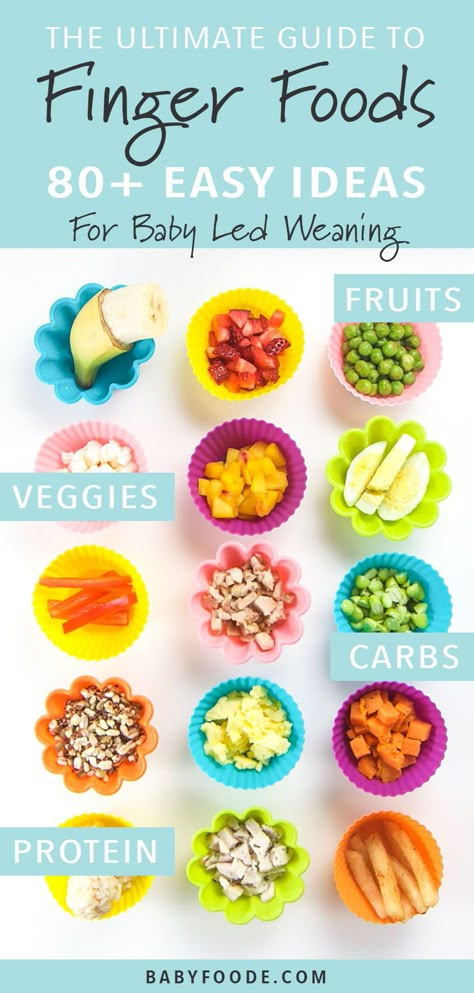 For example, vegetable complementary foods can be started with a teaspoon of zucchini puree. During the week, give the baby only this product, gradually increasing its volume. After a week, add a teaspoon of mashed broccoli or cauliflower to the zucchini puree and continue to increase the total volume every day. Vegetable puree from three types of vegetables will be optimal. The portion should correspond to the age norm. Over time, you can replace the introduced vegetables with others faster.
For example, vegetable complementary foods can be started with a teaspoon of zucchini puree. During the week, give the baby only this product, gradually increasing its volume. After a week, add a teaspoon of mashed broccoli or cauliflower to the zucchini puree and continue to increase the total volume every day. Vegetable puree from three types of vegetables will be optimal. The portion should correspond to the age norm. Over time, you can replace the introduced vegetables with others faster.
After the introduction of one vegetable (bringing its volume to the required amount), you can proceed to the intake of porridge, and diversify the vegetable diet later.
If the child did not like the dish, for example, broccoli, do not give up and continue to offer this vegetable in a small amount - 1-2 spoons daily, you can not even once, but 2-3 times before meals, and after 7 - 10, and sometimes 15 days, the baby will get used to the new taste. This diversifies the diet, will help to form the right taste habits in the baby.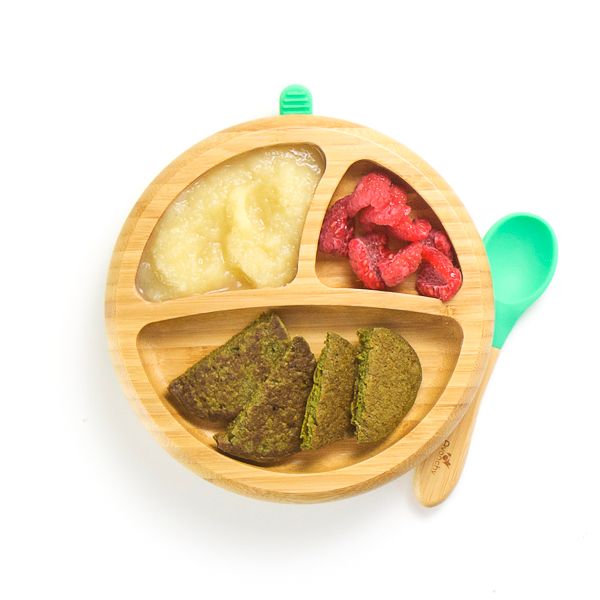
Spoon-feeding should be done with patience and care. Forced feeding is unacceptable!
In the diet of healthy children, porridge is usually introduced after vegetables (with the exception of healthy breastfed children, when complementary foods are introduced from 6 months). It is better to start with dairy-free gluten-free cereals - buckwheat, corn, rice. At the same time, it is important to use porridge for baby food of industrial production, which contains a complex of vitamins and minerals. In addition, it is already ready for use, you just need to dilute it with breast milk or the mixture that the baby receives.
Children suffering from food allergies are introduced complementary foods at 5-5.5 months. The rules for the introduction of products are the same as for healthy children, in all cases it is introduced slowly and begins with hypoallergenic products. Be sure to take into account individual tolerance. The difference is only in the correction of the diet, taking into account the identified allergens. From meat products, preference should first be given to mashed turkey and rabbit.
From meat products, preference should first be given to mashed turkey and rabbit.
Diets for different age periods
Explain how you can make a diet, it is better to use a few examples that will help you navigate in compiling a menu specifically for your child.
From 5 months, the volume of one feeding is on average 200 ml.
Option 1.
If your baby started receiving complementary foods from 4-5 months, then at 6 months his diet should look like this:
| Breast milk or VHI* | 200 ml | |
| II feeding 10 hours | Dairy-free porridge** Supplementation with breast milk or VHI* | 150 g 50 ml |
| III feeding 14 hours | Vegetable puree Meat puree Vegetable oil Supplementing with breast milk or VHI* | 150 g 5 - 30 g 1 tsp 30 ml |
| IV feeding 18 hours | Fruit puree Breast milk or VHI* | 60 g 140 ml |
| V feeding 22 hours | Breast milk or VHI* | 200 ml |
* - infant formula
** - diluted with breast milk or VHI
Option 2.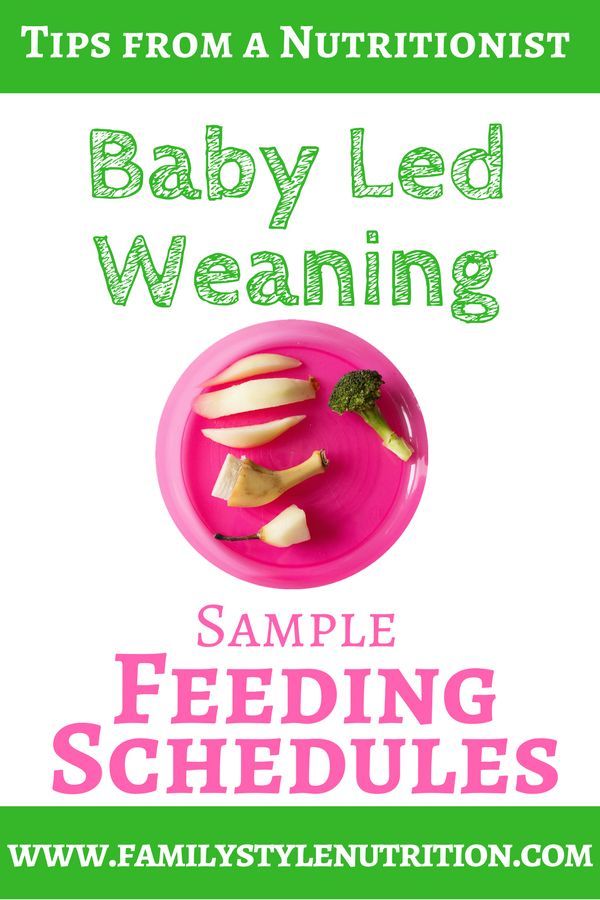
* - infant formula Option 3. : ** - diluted with breast milk Up to 7 months, increase the volume of porridge and vegetable puree to 150 g and introduce fruit puree. I feeding
6 hours Breast milk or VHI* 200 ml II feeding
10 hours Dairy-free porridge**
Fruit puree 150 g
20 g III feeding
14 hours Vegetable puree
Meat puree Vegetable oil
Fruit juice 150 g
5 - 30 g
1 tsp
60 ml IV feeding
18 hours Fruit puree
Breast milk or VHI* 40 g
140 ml V feeding
22 hours Breast milk or VHI* 200 ml
** - diluted with breast milk or VMS 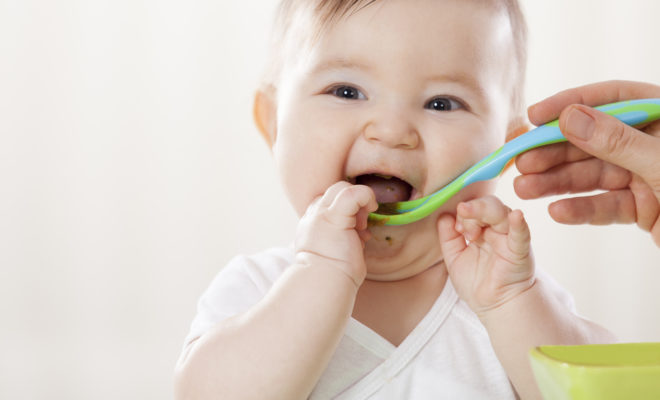
I feeding
6 hours Breast milk II feeding
10 hours Dairy-free porridge**
Breast milk supplement 100 g III feeding
14 hours Vegetable puree
Meat puree Vegetable oil
Breast milk supplement 100 g
5 - 30 g
1 tsp IV feeding
18 hours Breast milk V feeding
22 hours Breast milk 






